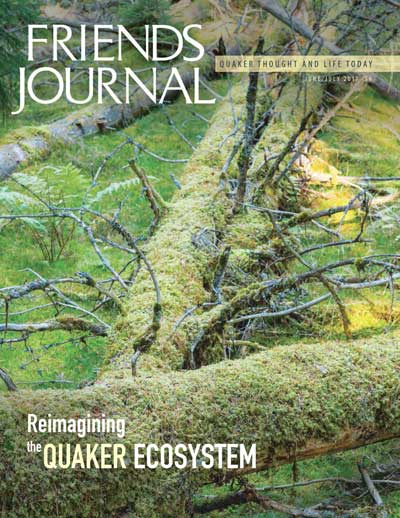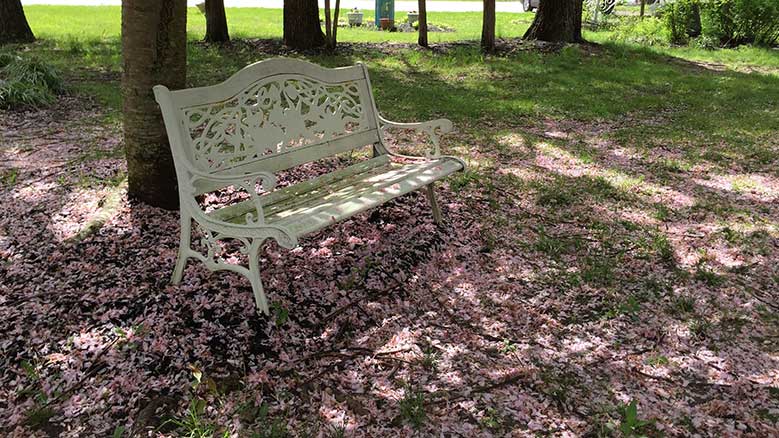Among Friends June/July 2017
In the temperate rain forests of the Pacific Northwest, which surround the cities where I grew up, death and life are a continuum. The same is true for ancient ecosystems everywhere.
These damp, lush, wild places were magical to me as a child, and they are no less so today. The giants of the Pacific Northwest’s old-growth forests are towering trees: Sitka spruce, western hemlock, Douglas fir. These forests are remarkable not only for their beauty but also for their diversity and their resilience. Scientists who study the processes at work in forest ecosystems contend that biodiversity aids in resilience. When a canopy tree dies, the hollows in its standing trunk become homes for owls, its bark fodder for insects, its roots shelter and hiding places for small mammals. Amid a carpet of ferns and lichen, young trees draw new life from the nourishment of a soil enriched by the life, activity, and death of organisms large and small, a life and power compounding since the dawn of our planet. When a tree falls, the sun’s light reaches the forest floor with a new intensity, catalyzing new growth, making room for tomorrow’s yearning limbs.
Our giants do not, need not, and must not live forever in order to nourish the ecosystems of the future. When I see Quaker systems, processes, or institutions failing to serve us now the way they seemed to serve Friends in ages past, a reflection on the life of the forest is one I find not only informative but transformative.
Our institutions are important, but as four centuries of Friends following the Quaker way have demonstrated, none has survived unchanged, unbroken. Tall trees have fallen, and we hear the crack and thrash today of more still. Species have evolved—not because our ancestors or their ways were primitive, but because adaptation is a necessity for survival. Our experience is that God, the Divine, the universal Spirit, constantly reveals truths to us directly and as a community as we practice patient listening, waiting worship, and faithful ministry. By breathing in and living out these messages, we are changed. And the forest lives.
In this issue of Friends Journal, we invite you to observe and to consider. How are new Quaker practices, processes, even institutions emerging to serve us now? How must our structures adapt? What can we learn from that which thrives within our communities? How are we ourselves adapting to the Quaker ecosystem in which we function? As a unique individual and a participant in this sacred life, what is my niche and how does my life support the life of the holy whole? We invite your reflections, dear reader. Thank you for being our companion in this walk in the woods.




Comments on Friendsjournal.org may be used in the Forum of the print magazine and may be edited for length and clarity.